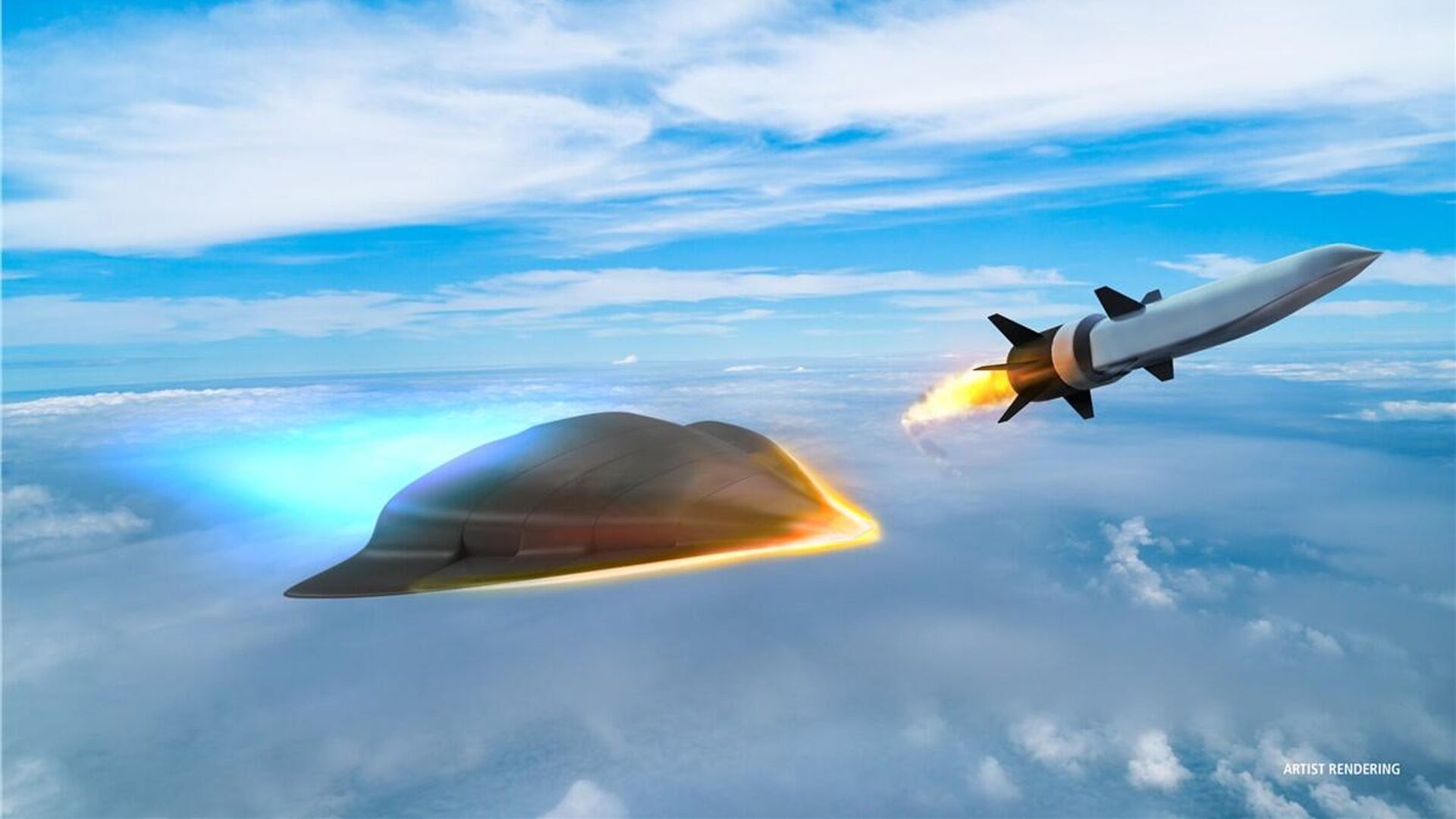Factors That Will Drag Down Britain's Hypersonic High Hopes

© Photo : Raytheon Technologies
Subscribe
About a dozen countries are working on hypersonic missile tech, with only a handful fielding maneuverable hypersonic projectiles. The UK will have to overcome an array of fundamental scientific problems before it can become a hypersonic power in its own right, and funding is only part of the equation, says Russian missile expert Dmitry Drozdenko.
Sources told the Telegraph on Saturday that the UK’s Defense Ministry is coordinating the development of a new, entirely British-created and built hypersonic cruise missile with the ability to accelerate to speeds above Mach 5 (6,125 km per hour – the threshold of hypersonic speed).
The up to £1 billion ($1.26 billion) initiative, expected to deliver a working weapon to the military by the year 2030, has been approved by the government as part of a £75 billion ($94.8 billion) defense overhaul. The project is said to be in the early stage of development, with no decisions made as to whether it will be air, ground or sea-launched.
Pertinent information such as range and payload remains unknown. Sources indicated that the MoD has asked a consortium of British defense companies to think up possible designs under a ‘Hypersonic Technologies & Capability Development Framework Agreement’ launched in December.
The sources elaborated that the homegrown materials which could withstand the extreme heat generated by projectiles flying and maneuvering at extremely high speeds (a hallmark of true hypersonic capability) do not exist and must be created from scratch.
The British hypersonic cruise missile concept is the second initiative of its kind. In 2022, a consortium of defense enterprises together with the UK MoD’s Defense Science and Technology Laboratory announced the Hypersonic Air Vehicle Experimental (HVX) program to “establish the UK as a leader in reusable hypersonic air systems.” The UK rolled out the ‘Concept V’ hypersonic aircraft project at the 2022 Farnborough Airshow, with the sample vehicle design said to be “one of a number of concept designs in active development by the [HVX] program.”
The Telegraph’s sources did not specify whether the hypersonic cruise missile idea was an outgrowth of the HVX program, or its own separate entity.
Speed is Not Enough
Britain will have difficulty fielding its hypersonic cruise missile by the MoD’s self-imposed deadline, with UK scientists first needing to solve an extensive array of fundamental scientific problems which it took the USSR and Russia decades to iron out, says Dmitry Drozdenko, a renowned Russian military analyst and missile expert.
“Basically, objects flying at hypersonic speeds move in a cloud of plasma, and plasma is the fourth aggregate state of matter, which does not transmit radio signals, and behaves differently” compared to other physical states, Drozdenko told Sputnik.
“That is, in order to break through these physical phenomena and learn to use them, one would need to have a fundamental scientific knowledge in the field of the physics of bodies, the dynamics of physics and materials science. This comes down not to some design engineers, computers or billions in funding, but to the scientists who work in universities and institutes,” Drozdenko emphasized.
It’s no accident that Russia was the first country in the world to develop hypersonic weaponry, the observer noted, pointing to the knowledge amassed during the Soviet period into plasma physics during the Cold War.
“The Americans have good scientists, but they simply have not reached this level,” Drozdenko stressed, adding that as far as the UK is concerned, “their level of competence in this area is even lower than that of the Americans.”

Researchers from the Kurchatov Institute of Atomic Energy carry out an experiment involving a jet of plasma artificially created in a laboratory environment. July 31, 1971.
© Sputnik / S. Onanov
That’s not to say that London cannot eventually make a breakthrough in this direction, the observer emphasized, with the question being whether they can do so by the 2030 deadline.
Even the United States, which has pumped billions of dollars into at least half-a-dozen different hypersonic weapons project for the Army, Navy and Air Force, has yet to produce a working hypersonic missile system – and that’s accounting for the Americans’ extensive knowledge, approaching that of the Soviets, in the field.
“Materials that can withstand such high temperatures, including special ceramics, have been known about since the creation of the Space Shuttle and the Buran. High-temperature-withstanding ceramics are used in aircraft engines, in turbine wheels, which makes it possible to increase temperatures in the combustion chamber…and increase the efficiency of engines. Britain is a manufacturer of jet engines and has Rolls Royce and the like. Therefore, they have a certain level of competence in this area. But it doesn’t end there. This doesn’t mean that a rocket can simply be covered in ceramic tiles,” the observer explained.
Hypersonic ‘Fetish’
Accelerating a missile or aircraft to speeds of Mach 5 or above is one thing, but the main issue is the platform being able to maneuver in flight. That is the true measure of a hypersonic missile, Drozdenko says.
“A certain fetish exists around hypersonics today. The task is not to get a projectile flying at hypersonic speeds. A tank round flies at a hypersonic speed at the moment it exits from the tank gun’s barrel. Any vehicle reentering the atmosphere from space is traveling at hypersonic speed. That’s not the issue. The issue is not flying at this speed, but being able to maneuver at this speed,” he emphasized.
Otherwise, if a missile traveling at hypersonic speeds is capable of flying only at aeroballistic trajectories, it will remain predictable, and unable to maneuver to bypass enemy air defenses.
Money Not the Issue
“Technologies are developed by people,” Drozdenko said, commenting on the UK’s plans to spend £1 billion on its hypersonic gamble. “Money is one means of developing a technology, but it can happen that a technology is created with a minimum amount of funds. It can turn out that you have a lot of money, but the technology doesn’t work out. Therefore, money is not the main thing here. The main thing is people, and having the appropriate academic knowledge.”
“Therefore, everyone will work on these technologies. Someday they will definitely break through. But by the time they make an analogue to the Zircon, I think we will already have something else,” Drozdenko predicted.




